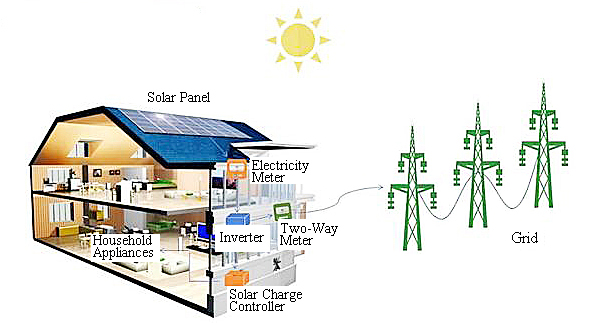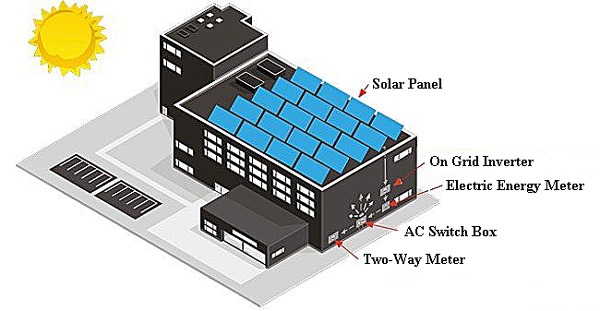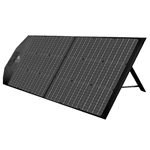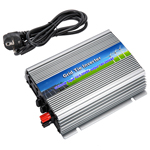-
You have no items in your shopping cart.
- Register
- Log in
- Wishlist
- Shopping cart
PV Power Generation Solution
With the acceleration of global carbon neutralization, the development of photovoltaic power generation is changing with each passing day. Reliable and efficient connections are essential for success. The connection requires the use of durable products with a service life that meets the requirements of photovoltaic power plants, which can withstand harsh environments and require no maintenance. Your connections also need to be able to meet the ever-increasing demands of electrical performance, easy to install, and safe for installers and operations.
Starting from diversified and personalized energy needs, Inverter.com provides enterprises with photovoltaic and energy storage system consulting, development, investment, delivery, operation and maintenance and other clean energy by virtue of the world's leading system integration technical strength and comprehensive energy service system. The full life cycle solution helps enterprises to achieve self-management of energy consumption, maintain and increase the value of multiple assets, and promote enterprises to enter the era of zero emission.
Distributed PV Power Generation Solution
Distributed photovoltaic power generation is a technology that directly converts light energy into electrical energy by using the photovoltaic effect of the semiconductor interface. It is mainly composed of solar panels (components), solar charge controllers and solar inverters. After the solar cells are connected in series, they can be packaged and protected to form a large-area solar cell module, and then combined with power controllers and other components to form a photovoltaic power generation device.
The application scenarios of this solution can be urban high-rise, multi-storey residences, townhouses, single-family villas, rural residences, etc. Generally 1-10kW, can be installed on residential roofs, balconies, walls, ground, and can cooperate with developers to realize BIPV photovoltaic building-integration. The power generation can be all connected to the Internet, all self-use or self-generated and self-used surplus electricity. The system has a lifespan of 25 years.
Operating Mode
Under the condition of solar radiation, the solar cell module array of the photovoltaic power generation system converts the output electric energy from the solar energy, and sends it to the DC power distribution cabinet through the DC combiner box, and the grid-connected inverter converts it into AC power to supply the building itself. Excess or insufficient power is regulated by connecting to the grid.

Centralized PV Power Generation Solution
The centralized photovoltaic power station mainly uses large-scale solar cell arrays to directly convert solar energy into direct current. Through the lightning protection combiner box and the DC power distribution cabinet, the multi-channel DC is merged into the photovoltaic inverter, and the photovoltaic inverter converts the multi-channel direct current. It is then connected to the power grid through the AC power distribution cabinet, step-up transformer and high-voltage switchgear to transmit photovoltaic power to the power grid, and the power grid will be deployed to supply power to users.
System Structure
The centralized photovoltaic power station mainly consists of four parts:
- Power generation equipment (solar panels and lightning protection combiner boxes (APV)).
- Conversion part (DC power distribution cabinet (APG), grid-tie inverter, AC power distribution cabinet).
- Grid-tie part (step-up transformer and medium and high voltage switchgear).
- SCADA system (environment and site detection system, data acquisition communication unit and background network management system.
Industrial and Commercial Building PV Power Generation Solution
Photovoltaic power stations in industrial and commercial buildings are mainly located in urban industrial parks or enterprises, commerce, office buildings, logistics parks and other places with large roofs. The power generated by the distributed photovoltaic power generation system will be consumed locally to the greatest extent, and only a small proportion of excess power will be transmitted to the grid.
System Structure
The grid-tie photovoltaic power generation system of industrial and commercial buildings mainly includes solar panels, DC combiner boxes, AC combiner boxes, on gird inverters and AC grid-tie cabinets. It is necessary to install relevant power quality detectors according to the local electricity bureau.

Inverter.com Products for PV Power Generation Solution
| Solar panels | Solar charge controllers | On Grid Inverters |
 |
 |
 |
Advantages of photovoltaic power generation
- Solar energy resources are abundant and free, and there is no danger of depletion.
- Safe and reliable, no pollution, no noise, no harmful gas emissions and pollution.
- It is not limited by the geographical distribution of resources, and can be used in areas without electricity and complex terrain, and can take advantage of the advantages of building roofs.
- It is possible to generate electricity on-site without consuming fuel and erecting transmission lines.
- High energy quality.
- Very little maintenance is required to keep the system running.
- The system is a component, which can be quickly installed anywhere, with a short construction period and short energy acquisition time.
Significance of photovoltaic power generation
Use the light-facing side of the building to absorb solar radiation and directly convert it into electricity. It can not only reduce conventional energy consumption and protect the environment, but also cooperate with battery charging to meet local living and production energy requirements.
- The enclosure surface can be effectively used without additional land or other facilities, saving land resources.
- It can generate electricity and use it on the spot, which can save the investment in the power transmission grid of the power station and reduce the loss of power transmission and distribution.
- In addition to ensuring the power consumption in its own building, the photovoltaic system can also supply power to the power grid, thereby alleviating the peak power demand and solving the contradiction between the peak and valley supply and demand of the power grid, which has certain social benefits.
- Since the photovoltaic array is installed on the roof and directly absorbs solar energy, it avoids the overheating of the wall and roof, so it can improve the indoor temperature and reduce the air conditioning load.
- The use of solar photovoltaic power generation reduces the serious air pollution generally caused by fossil fuel power generation, which is extremely important today and in the future with higher environmental protection requirements.
